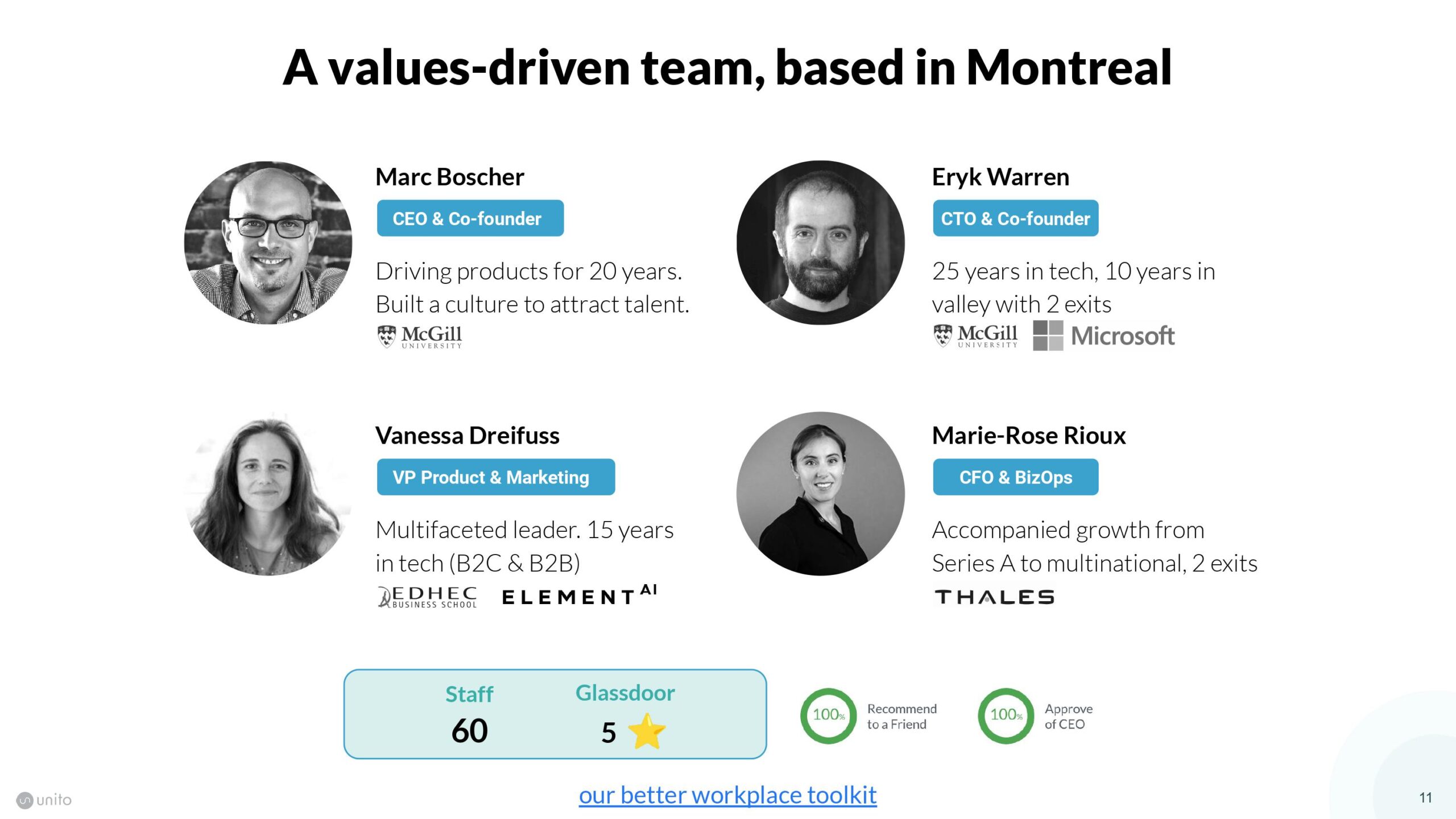Unito is a platform that takes a different approach to managing SaaS apps. Today we’ll take a look at how the company’s pitch deck helped it raise $20 million in Series B funding last year.
We’re looking for more unique pitch decks to tear down, so if you want to submit your own, here’s how you can do that.
Slides in this deck
Unito shared its 12-slide deck, which is lightly redacted: It removed some logos for the companies it works with and left out its target companies, revenue targets and its growth chart. Still, even with these details omitted, we get a great picture of the company’s narrative structure.
Here’s an overview of the slides:
- Cover slide
- Highlights/summary slide
- Market context slide
- Problem slide
- Solution slide
- Product slide
- How it works slide
- Product evolution slide
- Growth/traction slide
- Competition/positioning slide
- Team slide
- Summary slide
Three things to love
The slide deck is missing a lot of information that I’d have liked to see, but the information that’s there is extraordinarily clean and simple, without going too deep into the weeds. The slides’ design is simple, clean and easy to read. If you only take away one thing from this teardown, let it be: Simplify your slides!
Extraordinary team slide
At early-stage companies, “founder/market fit” is the name of the game. By the time you grow to a Series B, however, you’re on your path toward growth, and the focus of the senior team shifts toward building, growing and retaining your team. Unito’s team slide tells that story beautifully:
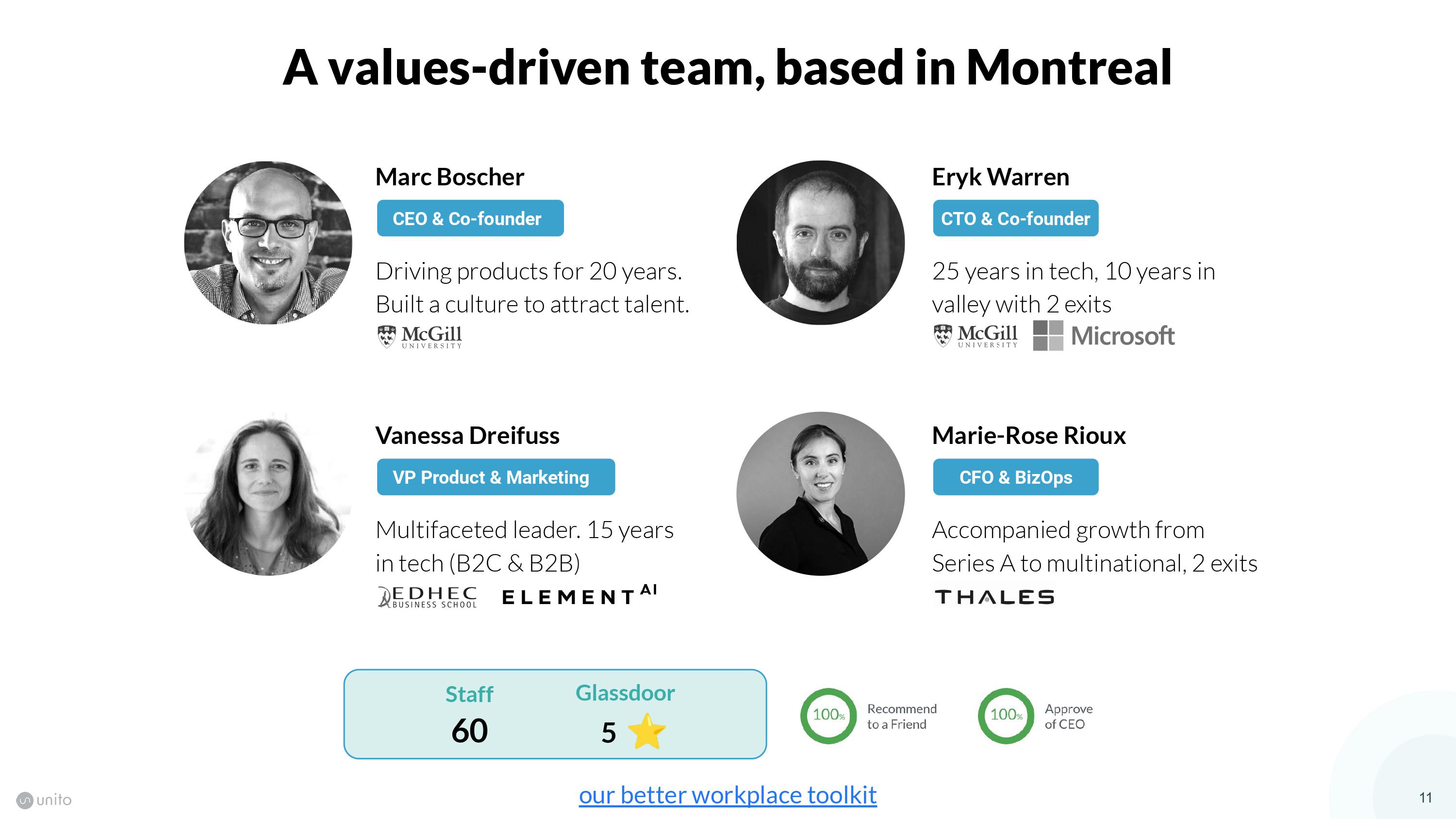
[Slide 11] A great team slide. Image Credits: Unito
A combination of team building, startup experience and domain expertise lays the foundation for a great story around the senior team. The Glassdoor ratings and the company’s “better workplace toolkit” shows that it practices what it preaches, and that — combined with the company’s growth trajectory — goes a long way.
A logical evolution
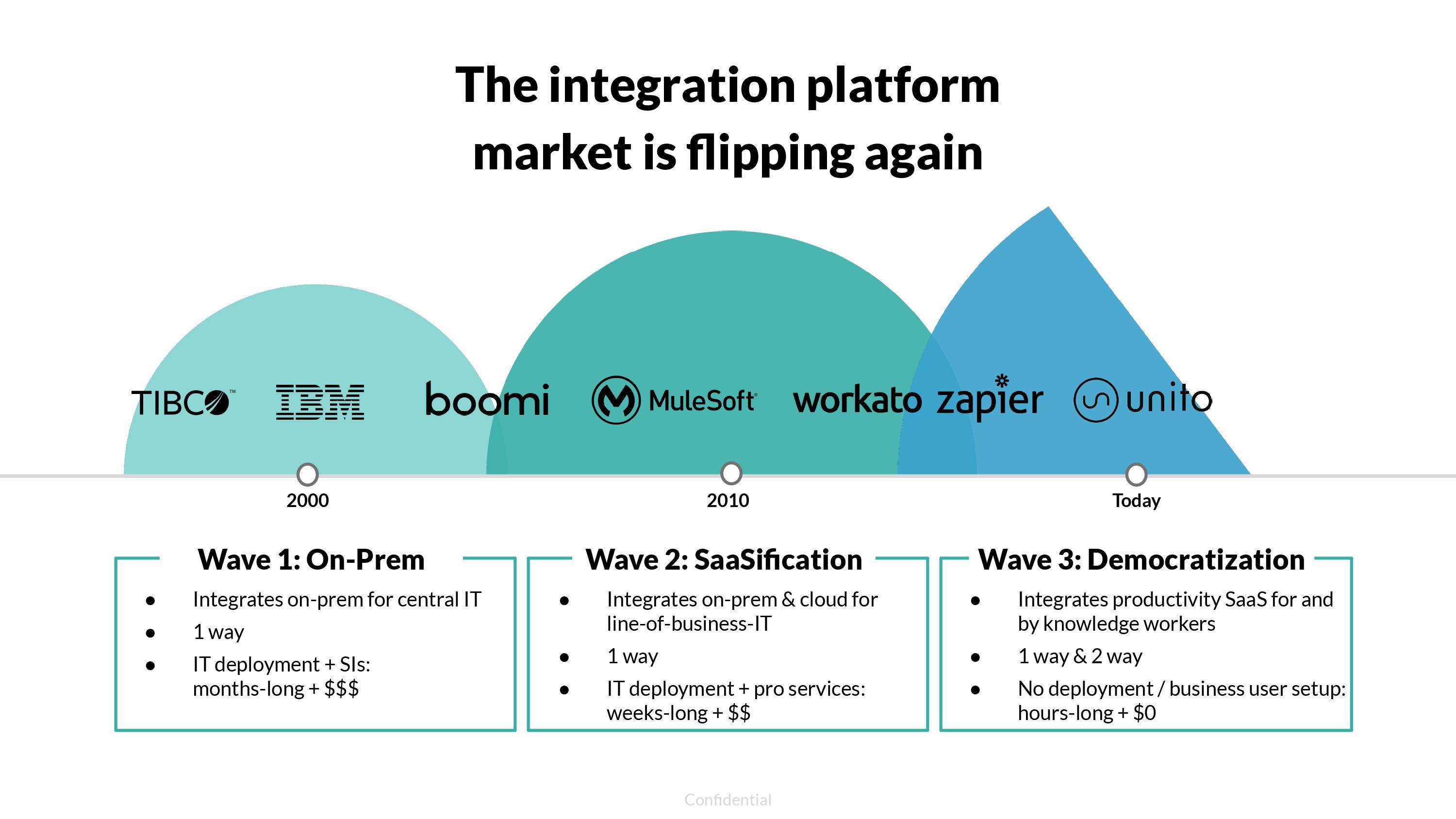
[Slide 3] Positioning the company in context. Image Credits: Unito
Humans are narrative-driven. Being able to tell the story of how a startup fits into the broader context is very smart. I have a particular weakness for market evolutions and seeing how verticals change over time. This is Unito’s third slide, and the company is using it to great effect, showing how it can be the obvious next evolution of how SaaS companies talk to each other.
It’s important to think about how your company fits into a historic context for your market or industry. This can be a great way to anchor a narrative to previous successful businesses and position yourself within the sector. In some cases, it can take the place of the “why now” part of your story.
Vertical expansion
Unito started by building a set of sync tools for a specific niche: keeping the tools that product managers use in sync with tools that developers use. That’s a great way to have a specific, well-defined set of tools you have to work with. From there, the company decided to start expanding:
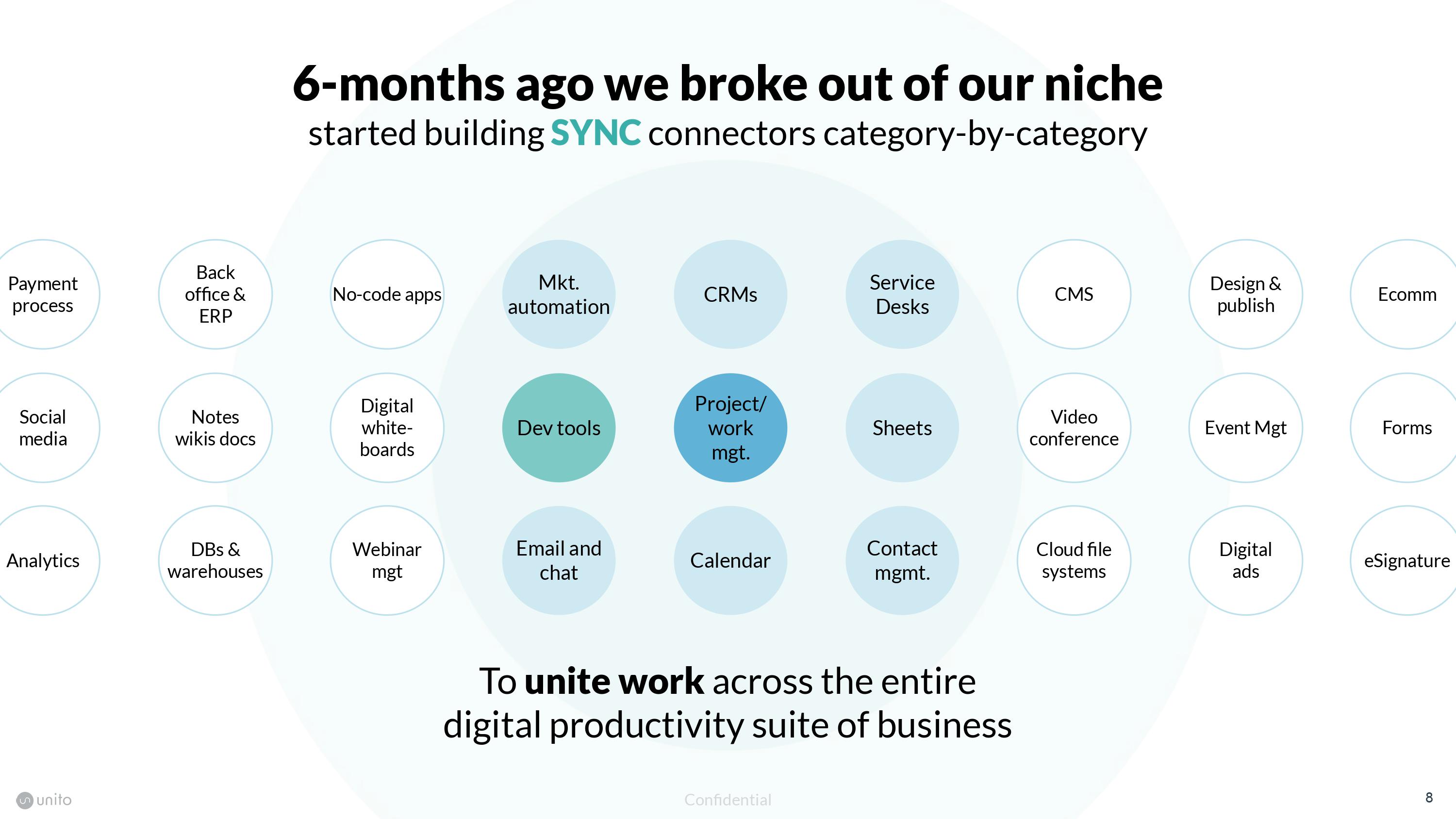
[Slide 8] Vertical expansion is powerful. Image Credits: Unito
This type of expansion affects a lot of different things, not least the total addressable market. We usually see this type of expansion geographically: If you have a company that has built a set of solutions for Germany, you might expand to the rest of Europe or globally. Market expansions like this can be equally powerful. It means that the addressable market grows exponentially; adding marketing, contact management and social media to the sync matrix, for example, can open up huge new market opportunities and potential for growth.
It makes the same point, but more specifically, on its competition slide:
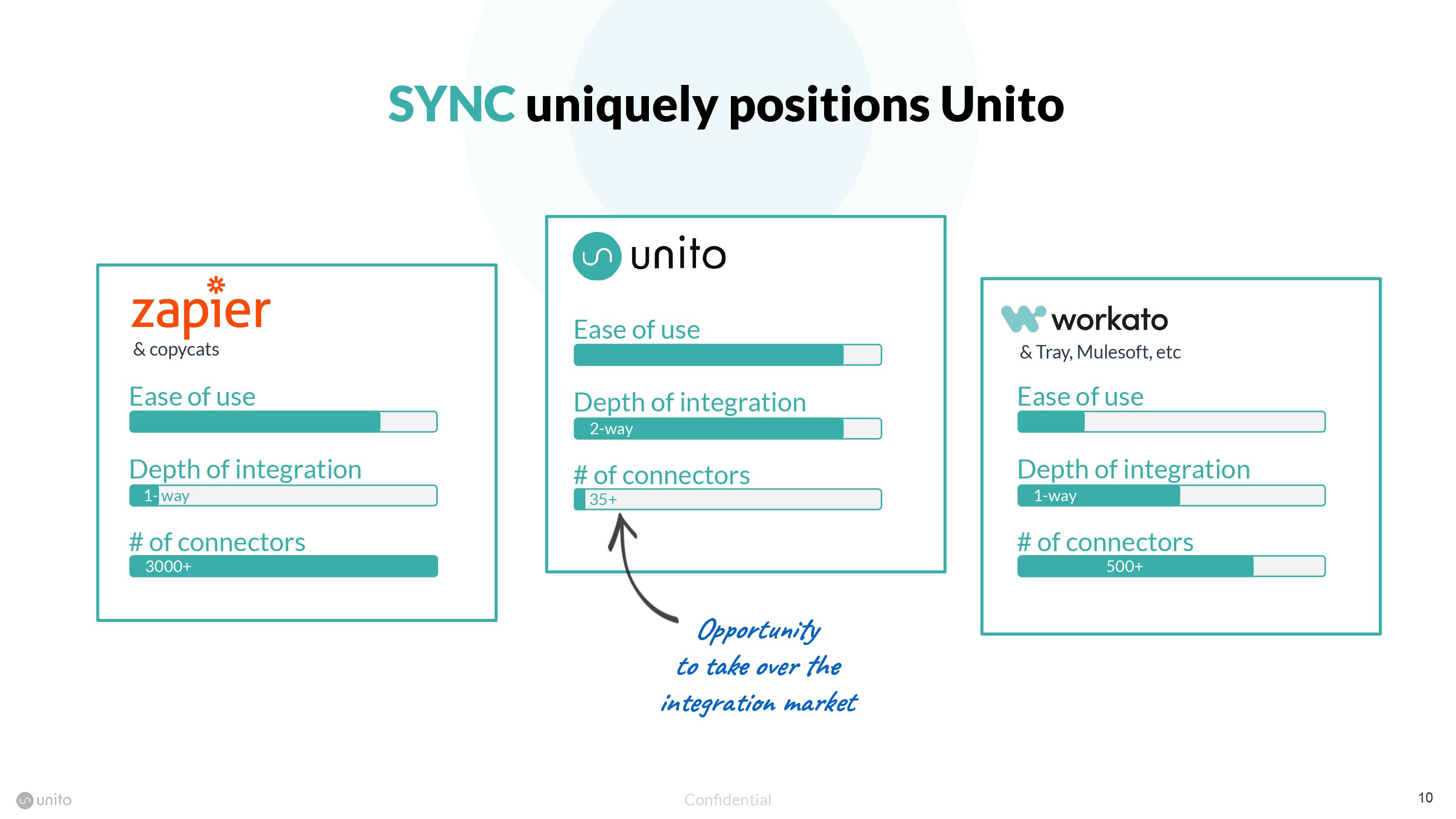
[Slide 10] The competition slide reiterates the opportunity. Image Credits: Unito
This is the type of thing you learn in business school, so it’s great to see it out in the wild. Strategically, the path Unito built makes a lot of sense, and I’m not surprised that this narrative resonated with investors.
In the rest of this teardown, we’ll take a look at three things Unito could have improved or done differently, along with its full pitch deck!
Source: techcrunch.com

